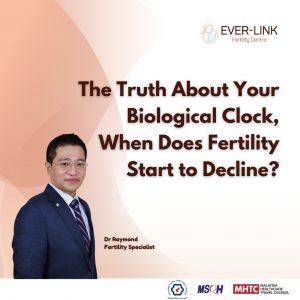
The concept of a biological clock is often discussed in terms of fertility, but what does it really mean? The decline in fertility isn’t just a matter of age, it’s deeply connected to biological processes that happen naturally over time. Understanding how these changes occur can help you make informed decisions about your reproductive health.
How Fertility Changes Over Time
Women are born with all the eggs they will ever have, about one to two million at birth. Unlike men, who produce sperm continuously throughout their lives, women don’t generate new eggs. Instead, the number and quality of eggs steadily decrease as they age.
By puberty, the number of eggs drops to around 300,000. With each menstrual cycle, about 1,000 eggs are lost, though only one is typically released during ovulation. Over time, the remaining eggs become less viable, meaning they are less likely to result in a healthy pregnancy.
When Does Fertility Decline?
- In Your 20s: This is when fertility is at its peak. The chances of conceiving each month range from 25% to 30%.
- In Your 30s: Around age 30, fertility starts to gradually decline. By 35, the chances drop to about 15-20% per month.
- After 35: The decline accelerates. Egg quality diminishes, and the chances of chromosomal abnormalities increase. By age 40, the odds of conceiving naturally drop to roughly 5% per cycle.
- After 45: Natural conception becomes unlikely, though advances in reproductive technology offer alternative paths to parenthood.
The Biological Reasons Behind the Decline:
- Egg Quality & Chromosomal Health
One of the biggest factors in fertility decline is egg quality. As a woman ages, her eggs are more likely to develop chromosomal abnormalities, which can lead to miscarriage or genetic conditions like Down syndrome. This is why older women often face increased pregnancy risks.
- Hormonal Changes
Estrogen and progesterone, the key hormones responsible for ovulation and pregnancy, fluctuate with age. By the late 30s and early 40s, the body may have irregular cycles, making ovulation less predictable. This hormonal imbalance can also affect the uterine lining, making it harder for an embryo to implant and develop properly.
- Diminishing Ovarian Reserve
“Ovarian reserve” refers to the total number of eggs available in the ovaries. Over time, the reserve gets lower, leading to fewer eggs being released during each cycle. When ovarian reserve diminishes significantly, menopause eventually follows, marking the end of fertility.
- Changes in Uterine Health
The uterus also undergoes changes with age. Blood flow to the uterus may decrease, and the uterine lining may become thinner, making it more difficult for a fertilized egg to implant and grow.
Can You Slow Down Fertility Decline?
While aging is a natural process, certain factors can influence fertility health:
- Healthy Lifestyle Choices: Eating a nutrient-rich diet, exercising, and managing stress can support reproductive health.
- Fertility Assessments: Checking hormone levels and ovarian reserve can provide insight into reproductive potential.
- Egg Freezing: If children aren’t in your immediate plans, freezing eggs in your younger years can provide future options for conception.
Embracing Your Journey
Rather than seeing the biological clock as a countdown, it’s helpful to view it as a guide. Understanding fertility decline allows you to plan ahead, seek medical advice when needed, and explore different paths to parenthood.
No matter where you are in your journey, fertility is just one part of your story. And whether you conceive naturally, seek fertility treatments, or choose alternative ways to nurture and love, what matters most is the life you create along the way.

